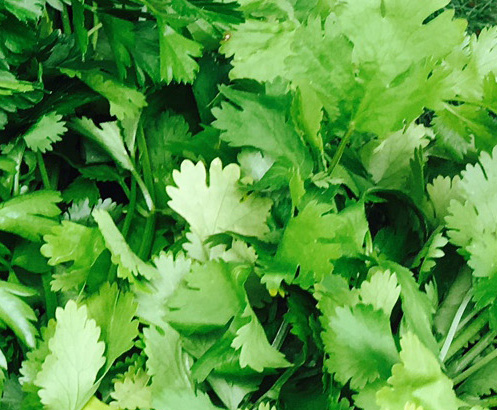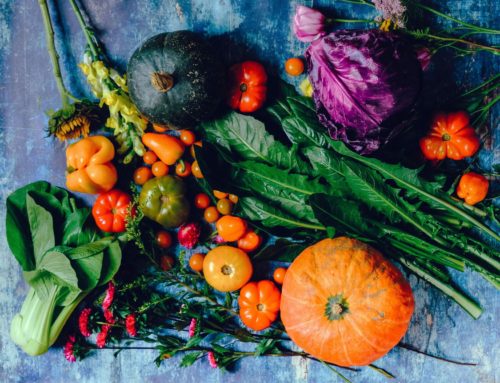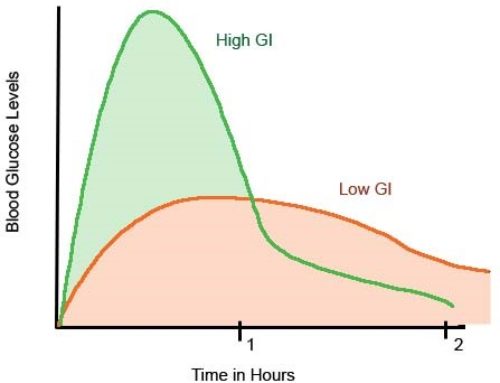
Course Extract from Culinary Herbs Course
COOKING WITH COMMON HERBS
Bouquet-garni
The bouquet-garni herbs include: parsley, sage, rosemary, thyme and a bay leaf – although these can be altered to suit the dish. Bunch herbs together and tie with a piece of string before placing into the dish – this way it can be easily removed once the dish is cooked.
Chervil
To encourage leafier plants that live longer – discourage flower set by pinching out buds as they appear. Chervil freezes well chopped and frozen in ice cubes – that way you have just enough for a meal.
Chives
- Cut chives at soil line when harvesting; to encourage better re-growth.
- Refrigerate chives, shallots or onions before chopping and the vapours which cause tears will be reduced.
Coriander
All parts of the plants can be used in cooking – the roots, stems and the leaves (the roots impart a stronger flavour and are used in Asian cooking).
Crushed Herbs
Crushed herbs impart more oils for oily herbs such as basil, oregano etc crush them before adding to a dish.
Dried Vs Fresh Herbs
If you are substituting dried for fresh herbs use 1/3rd the dried amount compared to fresh. Only substitute dried for fresh in cooked food – dried herbs for example are not pleasant in salads.
Flowers
The flowers of culinary herbs are great used in salads – nasturtiums, oregano, marjoram sage etc all are colourful and useful.
Fresh Dried Herbs are Best
Even dried herbs can become stale – replace your dried herbs regularly – test freshness by crushing – if there is little aroma or the aroma is straw or grass-like it is best to start anew.Dried herbs can become mouldy if exposed to moisture so use a spoon to extract herbs from the jar – don’t sprinkle from the jar into a steaming pot.
Garlic
- To make it easier to peel, hit hard with a blunt instrument first (or rinse first in hot water – skin should then slip off easily.
- Put a toothpick into garlic cloves before cooking in soups or stews, then removal after cooking will be easier.
- Garlic can be part boiled for 2 minutes prior to using to reduce the strength of the flavour.
Herbs in Flower
Try to use or process herbs before they flower – once they flower some herbs become bitter, lose flavour or produce a coarser flavour. Cut back perennial herbs once they have flowered to produce leafy new growth. Make sure you water and feed at the same time.
How Much to Use
Herbs should enhance not overwhelm the flavour of a dish – try a small quantity first.
Parsley
Parsley stems are stronger in flavour than the leaves. This can also be chopped and frozen in ice cubes.
|
When to Add Herbs into your Cooking Fresh herbs (other than in cakes, scones and bread etc.) are usually added near to the end of the cooking process to preserve the flavour. Some herbs such as basil, parsley (leaves) chervil, coriander (leaves), dill (leaves) are added almost at the last minute. Other herbs such as rosemary, sage and oregano are added 20 minutes or so before the cooking process if finished. Dried herbs are usually added at the beginning. Fresh herbs can be included in salads and refrigerated for about two hours – this allows flavours to blend.
|
CHOOSING AND USING HERBS FOR GARNISH
Garnishes can turn good food into exquisite food. If you wish to go that little bit further than your friends, and distinguish your party from everyone else’s, read on and learn about using garnishes.
Garnishes are things that are placed beside or around a food when it is served; to decorate, complement the taste or in some way enhance the overall dish/food.
Growing Garnishes
Garnish plants can be grown easily in pots, in a vegetable patch or in a garden bed.
- For most garnish herbs, full sun is ideal.
- Some garnishes such as mint, can handle full sun provided adequate moisture is supplied.
- If over-fertilised, the garnish may become poorly coloured and less flavoursome, so it is better to be on the conservative side rather than pump plants up with the nutrients.
- Over watering can kill most garnish plants, just like most other herbs and vegetables.
- Many garnish plants are seasonal so it is wise to check out available stock in your local garden centre to determine what to buy and plant.
There are two types of garnishes:
1. Simple Garnishes
These involve just one main ingredient, eg. a sprig from a herb, a vegetable braised or boiled and served with a dab of butter, or a salad vegetable. Simple garnishes include fresh rosemary, thyme, oregano, basil, mint, and edible flowers like nasturtiums.
2. Composite Garnishes
These involve several main ingredients – French cooking has developed many. They are usually added as a small serving to the side of the main dish, to add visual colour and texture to the plate, and also enhance and complement the experience of eating the main dish, eg. tartlets or a mixture of vegetables covered with a sauce.
Using Garnishes
A garnished meal can help bring guests to the table and may even entice them to try something they didn’t intend to eat. When selecting garnishes you should consider the event that the meal is catering to. For instance, an office party would require different garnishes than those used for a dinner party.
We all know that a garnish can make food look good. A mound of mashed potato looks quite commonplace, but place a sprig of parsley on top, and it becomes a picture as well as a great tasting food. Also think about the taste sensation of eating the mashed potato alone; then imagine eating it the parsley or chives and the overall taste experience changes.
Avoid garnishes that do not complement the taste of the dish or that overwhelm it. A strong tasting herb may improve a bland dish, providing only a very small quantity of the herb is used. Sweet herbs (eg. fruity sage) should not be used to garnish savoury foods (eg. Mexican nachos).
- Fish – garnish with fresh lemon slices and parsley, or fried diced lemon and parsley.
- Salad garnishes – parsley sprigs and flowers such as calendula, thyme flowers, oregano or marjoram.
- Meat and vegetables – garnish with a sprig of thyme, parsley or basil.
- Soup – herbs like chopped parsley or chopped chives or pesto made from basil, thyme, oregano etc.
- Italian dishes/tomato dishes – garnish with a sprig of basil, thyme or rosemary.
- Oriental Dishes – garnish with a sprig of coriander, lemon grass or Vietnamese mint.
- Japanese food – garnish with fine shredded cabbage.
- Garnishing a plate of hors d’oeuvres.
|
Chopping herbs Slice with a razor-sharp knife to avoid bruising the leaves – a blunt knife which bruises the herb tissue may release more flavour, but the tissue will discolour faster.
|
HERBAL TEAS
Herb Teas have been consumed for thousands of years in all parts of the world and in most cultures. A herb tea is basically made by mixing boiling water with a herb to extract the flavour or essence of the herb into the hot water. Herb teas can be drunk hot or cold (partly dependant on the herb being used). Herb teas can be made by using fresh or dried herbs (once again, partly dependent upon the herb being used).
Herb teas may be a mixture of different types of herbs.
Herb teas may be used for medicinal purposes, or purely culinary purposes.
Serving the tea the correct way is (in some places) considered an art itself. The flavour of a tea can vary according to:
- Whether the teapot is warm or cold;
- How long the tea is left to draw before serving;
- How quickly after serving the cup is drunk;
- How much herb material is used in the pot;
- The stage of growth of the herb material when it is harvested;
- The quality of water used;
- Whether herb material is fresh or dried.
Connoisseurs usually follow the rules below:
- Warm the teapot first.
- One teaspoon of tea per person and one for the pot.
- Stand for 3 minutes then serve.
- Use fresh (non-chlorinated water)
- Never allow tea to stand very long before drinking
- Never use milk as this can affect the pure flavour of the tea.
Some Common Herbal Teas
Lemon Balm (Melissa officinalis)
A very old, traditional tea from Europe; in England, a few lavender flowers are added to flavour. A little Rosemary, Spearmint or Cloves may commonly be added. Balm tea may be sweetened or spiced to flavour.
Bergamot Tea (MonardaDidyma)
Bergamot was used by the American Indians and early colonists.
Chamomile (Matricariarecutita)
Chamomile is one of the most popular teas in the world (for centuries). Made from the flowers of chamomile any one of several ways:
- With a little grated ginger over the steeping brew.
- With fennel: 2 parts chamomile flowers to 1 part fennel seed.
- Pure chamomile tea served cold.
- Pure chamomile tea served with honey, lemon or orange.
- Roman chamomile (Chamaemelumnobile) also known as chamomile is the medicinal herb – it has a bitter taste unlikeMatricariarecutitawhich is sweet and pleasant (and also has medicinal value).
Lemon Verbena Tea(Aloysiatriphylla)
Lemon verbena has a lovely and delicate lemon flavour; use 5 or 6 leaves per teacup; drink hot or cold. Orange verbena is also available.
Peppermint Tea (Mentha x Peperita)
May be served as straight peppermint tea, or flavoured by adding honey, alfalfa, clover flowers, linden flowers etc.
Rosemary Tea
Rosemary tea was recommended centuries ago by Arabian physicians for digestive problems. Lemon, honey or a few lavender flowers may be added to flavour.
Herb Vinegars
Herb vinegar is made by placing fresh herbs into a bottle of vinegar and letting it stand, sealed, for at least 2 to 3 weeks. The flavour will disperse from the herbs more readily if the bottles are stood in the sun. These vinegars are ideal as salad dressings, or used (as normal vinegar) in cooking.Suitable herbs include tarragon, sage, marjoram, thyme and savoury, to mention only a few.
Herb Oils
Made basically the same as herb vinegars – allow herbs to stand in non aromatic oils such as safflower or sunflower oils; can also be used as with unflavoured oils for cooking or in salads etc.
Herb Butters
Chopped herbs are mixed with butter or margarine. These can be used as spreads on bread or on top of other foods (hot vegetables etc) to add flavour.
Some of the more popular standard herb butters are listed below:
Maitred’Hotel Butter
Add few drops of lemon juice to half an ounce of butter. Then add half a teaspoon of fine chopped parsley, quarter teaspoon of fine chopped chervil and seasoning. Beat into a cream and serve in squares on top of steak.
Green Butter
Add to an ounce of butter – quarter clove of garlic, 1 shallot, pinch of salt, sprig of watercress, 1 sprig of chervil and pinch of cayenne.
Rub through fine sieve and store cold until you use.
Herb Cheeses
Grate cheese, add chopped herbs, heat in saucepan, pour into moulds, allow to cool then seal for storage by wrapping in metal foil.
This is a Cumberland recipe, more than 200 years old.
4 ounces of grated cheese
2 tablespoons full of thickened cream
3 teaspoons sherry
2 tablespoons of a mix of chopped parsley, sage, thyme, tarragon, chives, chervil and winter savoury.
Stir over gentle heat in a saucepan then pour into moulds.
Serve cold
Soft Cheese Herb Ring
500g of soft cheese (such as ricotta or cottage cheese).
150ml of sour cream.
225g of cooked chopped spinach (well drained – squeeze the liquid out with your hands).
100 grams of butter.
8 tablespoons of mixed (chopped) fresh herbs such as: chives, parsley, tarragon or your favourite mix.
A small sliver of garlic.
60grams of fresh breadcrumbs that you have dried slightly.
22g of powdered gelatine.
Salt.
Nutmeg.
4 tablespoons of lemon juice.
Mix the cheese with the cream, spinach, melted butter, herbs, breadcrumbs and chopped sliver of garlic
Sprinkle the gelatine on top of the lemon juice and leave it to soften then heat it very gently until the gelatine has dissolved. Stir it into the cheese mix along with the nutmeg and salt.
Line a 1.5 litre ring mould with some cling film and pour the mix into the mould smoothing the top. Chill in the refrigerator until set (a couple of hours should be adequate).
Un-mould the ring on to a serving plate and garnish with some sprigs of parley (this yields about 16 serves).
Serve with a mixed herb and mesclun salad and a tomato and basil salad plus some crispy fresh bread.
Herb Salt
Create in a jar – alternate thin layers of salt and rough chopped fresh herbs; store for several weeks to months before removing herbs with a sieve. The salt should retain the flavour of the herbs
Celery salt
Ingredients
1 tablespoon dried celery seed
2 tablespoons coarse salt
Crush celery seeds with a mortar and pestle or in a blender until finely ground
Then add the salt and process at high speed or also crush by hand until the salt is as fine as you would like it; store in a small jar with a tightly fitting lid.
Herb Scented Sugar
2 cups sugar
One clean 500ml jar with a tight fitting lid.
Choose sweet, aromatic flowers to flavour sugar such as lavender, scented geranium leaves and flowers, roses, lilac, and violets. You can use them singly or combine flavours – experimentation is the key! The flowers and leaves must be dry before combining with the sugar – if you can avoid washing them then that is best.
- Place ¼ of the sugar in the jar and scatter some of the herb flowers onto the top to cover.
- Repeat – in several layers finishing with some sugar and leaving a 1.5 cm space on top
- Secure the lid, shake the jar and store in a cool, dark place.
- Leave the sugar for three-four weeks before use – the longer the more the flavours will combine with the sugar.
- Top up the jar with sugar (as you use it) and give it a good shake to combine.
Mint, lemon verbena, lemon balm and other sweet herbs taste great as herbal sugars for use in tea. Use the herbal sugar when baking cakes and biscuits in place of plain sugar.
Herb Honey
Add sprigs of your favourite herbs to honey and mix thoroughly before storing. It is best to slightly warm the honey first – you can do this by leaving it in a warm position for a few hours. This should be let stand in a sealed jar for several weeks before using stored in a warm position (not in the fridge).
Herb Confectionary
Toffees, coconut ice and other home-made confectioneries can be flavoured by placing a layer of chopped herbs on the bottom of the container into which the candy mixture is poured.
Suitable herbs for use this way include; many of the mints and scented geraniums.
Peppermint Creams
225grams of icing sugar;
1 beaten egg white;
½ tablespoon of chopped fresh mint;
6 drops of peppermint essence.
- Sift the icing sugar into a bowl and gradually add the well beaten egg white- stir until you produce a stiff paste.
- Stir in the mint and the peppermint essence.
- Knead the mixture using the tips of your fingers for a few minutes.
- Roll out the mix in between two pieces of greaseproof paper or plastic film to 6mm thickness (do this on a cold surface).
- Remove the top sheet of paper or film and cut the dough with a pastry cutter into small 2.5cm rounds. You can re-roll the off-cuts until you have used all the paste. (You should aim to make about 30 sweets).
- Let the sweets dry for about 24 hours before serving.
Herb Biscuits
Standard biscuit recipes can have interest added to them by the addition of herbs. It is important to choose herbs which are compatible with sweet flavours though!
Marjoram and savoury are not recommended for use in biscuits.
The following work well: spearmint, lime scented geranium, pineapple sage, peppermint geranium’ lavender etc.
Herb Biscuit Recipe
2 cups of all-purpose plain flour
1 table spoon
3 teaspoons of baking powder
1 teaspoon of salt
1 teaspoon dill or rosemary leaves, sage or thyme – crushed
½ cup butter or margarine
¾ cup milk
- Heat oven to 180 degrees Celsius
- Mix flour, sugar, baking powder, salt and dill weed in medium bowl.
- Cut in shortening with pastry blender until mixture resembles fine crumbs or do it with your fingers but make sure that the mixture does not get too hot.
- Stir in milk until dough leaves side of bowl (dough should be soft and sticky).
- Turn dough onto lightly floured surface. Knead lightly 10 times.
- Roll to 1.25cm thick.
- Cut into 5cm rounds.
- Place on well-greased biscuit tray leaving 2 cm between each.
- Bake 10 to 12 minutes.
Savoury Herb Muffins
Great with pork or chicken or as a topping for pies
Cooking oil spray
2 cups self-raising flour
1 ½ teaspoons fresh sage (or other favourite herb), chopped or ¼ teaspoon dried sage
1 ½ teaspoons fresh thyme (or favourite herb), chopped or ¼ teaspoon dried thyme
¼ cup mayonnaise
1 cup milk (or buttermilk)
Preheat oven to180°C
- Grease a 12cup muffin pan with vegetable oil.
Combine herbs with the flower - Stir in the mayonnaise and milk until combines – do not over-stir the mixture.
- Divide batter evenly into the muffin cups
- Bake in preheated oven for 12 to 15 minutes until golden.
Herb Mustards
Made by mixing chopped herbs or herb seeds with plain mustard; plain mustard can be made by mixing mustard flour (ground mustard seed) with a good quality cream, a pinch of salt and a couple of drops of tarragon vinegar. Or use pre-prepared mustard of your choice. Add parsley, tarragon, chives or chervil (etc.) to the mustard and leave it to stand for a week or two before using. Use 2 tablespoons of herb to about half a litre of mustard.
Horseradish Cream
Great with roast beef, smoked fish and also asparagus!
2 tablespoons of freshly grated horseradish root
300ml of thick cream
1 ½ teaspoons of lemon juice
Salt and pepper and a small amount of sugar to taste
Gradually combine the horseradish with the cream (add slowly so that you can create the desired heat – taste as you go). Add the remaining ingredients and combine well.
MORE SELECTED HERB RECIPES
Baked Red Cabbage
1 small red cabbage
1 large onion
3 large cooking apples
Salt, pepper and crushed dill seeds to taste
Cooking oil
Water
Chop cabbage and onions, peel core and slice onions, and arrange these 3 ingredients in layers in a baking dish (or tray). Sprinkle salt, pepper and dill. Pour over a little oil and water. Bake at 180°Celsius.
Fast Mint Sauce
1 cup mint leaves
1 desert spoon of fine chopped onion
Small pinch of salt
Juice from half a lemon
2 teaspoons of honey
Mix all ingredients (preferably in a blender) to a paste then grind them with a pestle and mortar.
Mint Pasty (traditional recipe from Nth England)
2 cups fine chopped mint
2 cups currants
2 cups brown sugar
Pastry
Mix currants mint and sugar thoroughly and roll into a cylinder which holds together.
Wrap in pastry sheets and bake in oven till golden brown.
Dandelion Coffee
Gather dandelion roots in autumn, wash them but don’t cut them.
Bake in oven till deep brown colour; when cold, grind them and use as a coffee.
Grilled Red Capsicum Salad with Basil
Red Capsicums are lovely in this dish but a mix of yellow, green and red looks great on the plate.
Remove the skins from 500grams of capsicums by blistering the skins under a grill (cut them in half and remove the seeds first – them squash the halves flat. Once the skin is black place the peppers in a brown paper bag – this helps loosen the skin. Remove the blackened skin once the peppers are cool and cut into strips. Arrange the peppers on an attractive serving dish.
Other Ingredients
2-3 tablespoons basil flavoured oil
2 tablespoons of roasted pine nuts
1 – 2 tablespoons of lemon juice
2 teaspoons of fresh chopped basil
Salt to taste
Heat the oil in a small fry pan and add the pine nuts – cook gently until golden; add the lemon juice and pour over the salad. Garnish with the chopped basil and season with a pinch of salt.
Herb Mayonnaise
300ml of a good quality mayonnaise
1 bunch of fresh parsley
1 bunch of watercress
A handful of young spinach leaves
A handful of young sorrel leaves
3 sprigs of fresh tarragon
- Blanch all the herbs and leaves in boiling water for 1 minute (a wire basket is ideal for this).
- Plunge the herbs into very cold water immediately – drain and then pat the leaves dry with a clean cloth.
- Pound them with a mortar and pestle and then put through a sieve or use a blender.
- Stir through the mayonnaise just before serving – add a pinch of salt and pepper.
- Great with a chicken salad.
- Add chopped capers to serve with fish.
Tapenade
20 black Greek olives (stoned)
6 anchovy fillets
2 tablespoons of capers
2 hard-boiled egg yolks (free range is best)
1 small tin of tuna
A pinch of ground bay leaf
1 teaspoon of thyme or lemon thyme
5 tablespoons of olive oil
Lemon juice
Pepper to taste
Pound the anchovies, capers, egg yolks, bay leaf thyme to a smooth paste with a pestle and mortar (or use a blender); season the mix with a squeeze of lemon juice and pepper. Press into small individual pots or ramekins then chill for about 2 hours and serve with sour dough rye bread.
Apple and Mint Jelly
I large bunch of fresh mint
3 tablespoons of chopped mint
1 kg of green cooking apple
600ml water
300ml white wine vinegar
200 grams brown sugar
200 grams white sugar
Thoroughly wash the apples (skin on) and chop them roughly; place in a pan with the cold water, wine vinegar and the bunch of mint.
Bring to boil and then turn down the heat to a simmer for 30 minutes (the apples should then be soft).
Place in a jelly bag suspended over a bowl and drain overnight.
For every 600ml of juice you have captured add 400g of brown and 400 g of white sugar
Boil rapidly until it reaches setting point
Leave it to cool for about 15 minutes and then add the chopped mint.
Pour into warm sterilised jars and seal tightly once the jars are cool.
|
Testing for Setting Point Remove pot from heat, and put a small amount of the jam on a cold plate, let it cool and then push a finger gently onto the surface. If the surface wrinkles, the setting point has been reached. If not, return to boil for and re-test at 2 minute intervals.
|




Leave A Comment